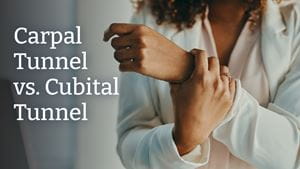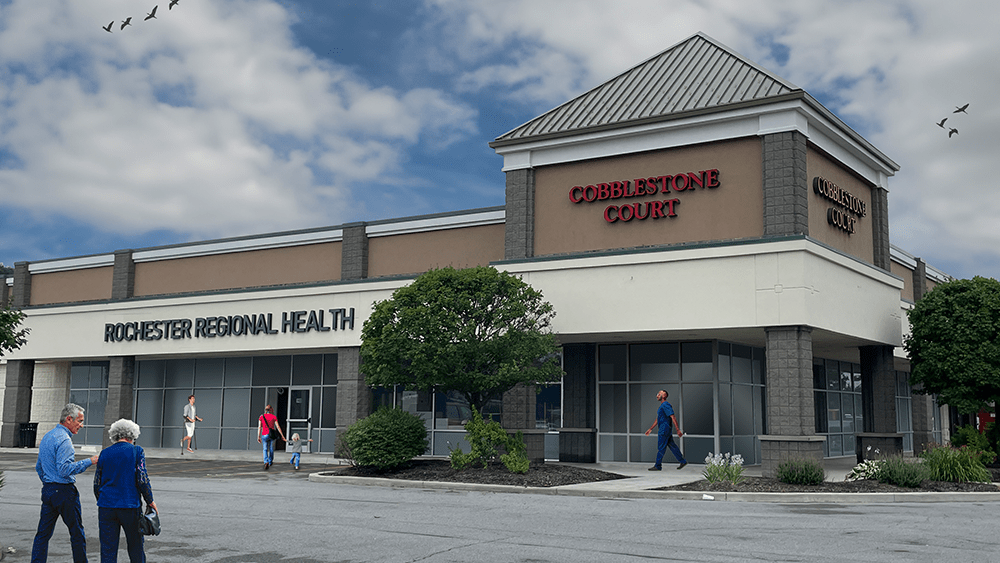
Pain and discomfort in your hands and wrists can be frustrating, especially if your daily activities include things like typing, cooking, and working with your hands. Both carpal tunnel and cubital tunnel syndromes impact nerves that can cause discomfort in your forearms, wrists, and hands.
“While both syndromes share similar symptoms, they are distinct conditions and impact different nerves, resulting in different treatments.”
Dr. Michael Schreck, an orthopaedic surgeon with Rochester Regional Health, explains the difference between the two syndromes and their symptoms.
The median nerve runs from your forearm to your wrist and hand—running through your carpal tunnel. Carpal tunnel syndrome occurs when the median nerve becomes compressed or pinched as a result of the carpal tunnel becoming inflamed, irritated, or injured.
Anything that squeezes or irritates the median nerve in the carpal tunnel area can lead to carpal tunnel syndrome. Both injuries, such as a wrist fracture, and overuse can lead to the condition.
Patients who have carpal tunnel syndrome often experience numbness, tingling, swelling, weakness, and tying in their hand, usually on the side of their thumb, index, and middle fingers. Often, patients feel pain and burning that can radiate up the forearm to the elbow.
What else might cause stiff or tingling fingers?An orthopaedic physician will recommend the treatment best suited for you, which may include:
If non-surgical treatments are ineffective in reducing symptoms of carpal tunnel, an orthopaedic surgeon may recommend surgery. Carpal tunnel release surgery is a procedure with the intention of relieving pressure on the median nerve, working to reduce pain.
Most people have experienced hitting their “funny bone” and feeling a wave of tingling and numbness in the arm—that feeling is caused by the ulnar nerve. The long-term compression of the ulnar nerve is what causes cubital tunnel syndrome. This compression can be a result of inflammation or injury of the cubital tunnel.
Cubital tunnel can result from anything that compresses or irritates the ulnar nerve—such as bending the elbow often, leaning on the elbow a lot, or injury to the elbow.
Patients with cubital tunnel syndrome often experience pain and numbness in their hand, generally on the side of their ring and pinky fingers. The condition can also cause aching near the inside of the elbow and/or weakness and clumsiness in the arm and hand. Patients often notice that their pain flares up at night after bending their elbow for a long time during sleep.
The most effective treatment for cubital tunnel syndrome is to stop the activity that causes the problem. Other treatments may include:
If you’re experiencing pain, numbness, tingling, swelling, or any discomfort in one or both of your hands, contact an orthopaedic physician.
“The best way to determine the difference between carpal tunnel syndrome and cubital tunnel syndrome is through a thorough examination,” said Dr. Schreck.
An orthopaedic physician can work with you to provide a proper diagnosis and useful treatment plan to reduce symptoms.
